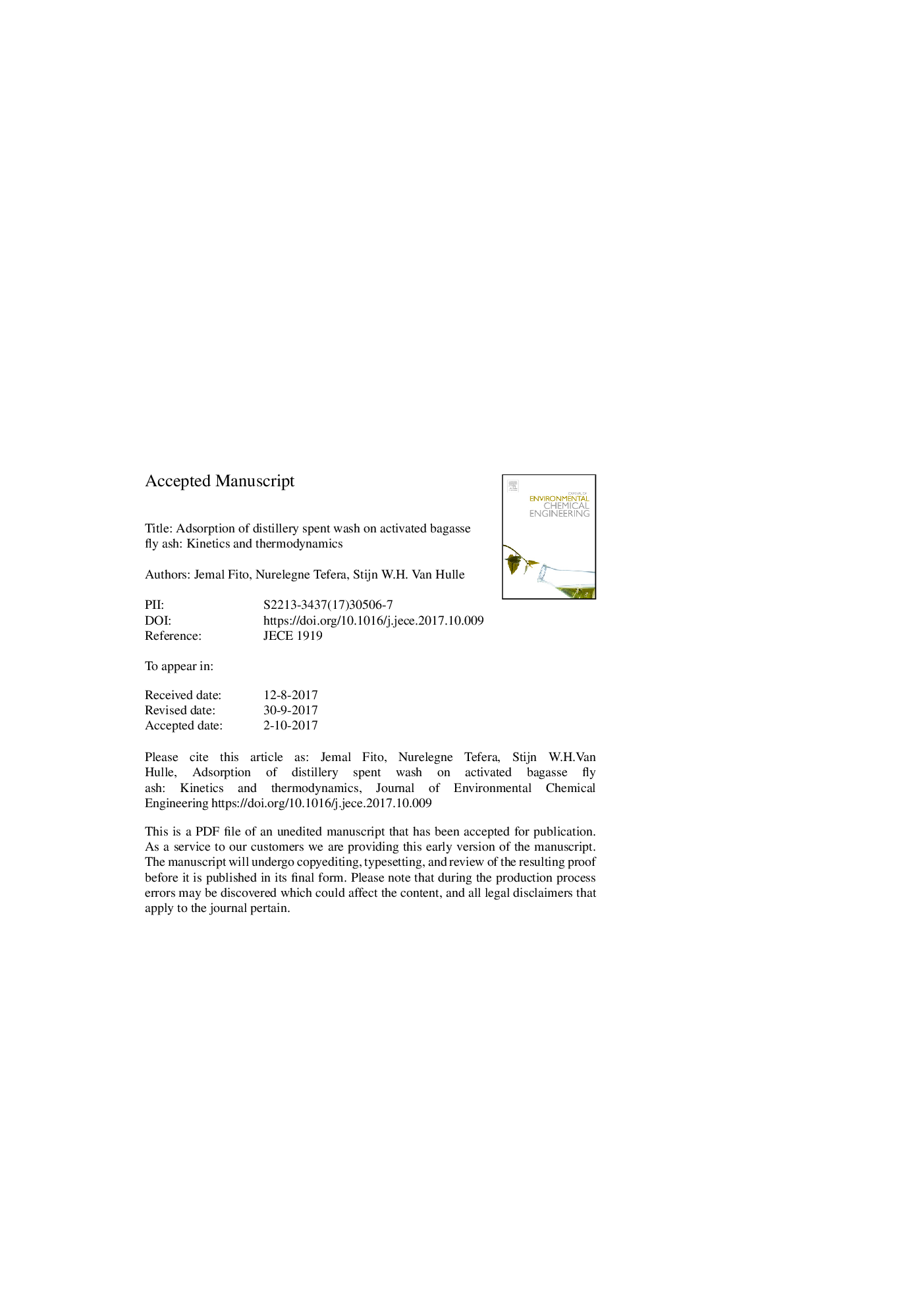| کد مقاله | کد نشریه | سال انتشار | مقاله انگلیسی | نسخه تمام متن |
|---|---|---|---|---|
| 4908338 | 1427044 | 2017 | 28 صفحه PDF | دانلود رایگان |
عنوان انگلیسی مقاله ISI
Adsorption of distillery spent wash on activated bagasse fly ash: Kinetics and thermodynamics
ترجمه فارسی عنوان
جذب ویتامین و مواد معدنی برای شستشو در خاکستر فعال باقیمانده: کینتیک و ترمودینامیک
دانلود مقاله + سفارش ترجمه
دانلود مقاله ISI انگلیسی
رایگان برای ایرانیان
کلمات کلیدی
موضوعات مرتبط
مهندسی و علوم پایه
مهندسی شیمی
مهندسی شیمی (عمومی)
چکیده انگلیسی
This study aimed to characterize distillery spent wash and COD removal from it using bagasse fly ash (BFA). The results of the analyses showed that the average value of BOD5 and COD were 35,990 mgLâ1 and 13,9671 mgLâ1, respectively. High amount of total nitrogen (1217 mgLâ1), total phosphorous (45 mgLâ1), total solids (156 mgLâ1) and low acidity (pH 4) were recorded. Adsorption of this spent wash on BFA was investigated at different temperatures, contact times, initial COD concentrations, pH solutions and adsorbent (BFA) doses. Raising temperature from 15 to 328 K resulted in increasing the uptake of the organic matter from 29.5 to 75.5%. Varying the initial COD concentration from 1000 mgLâ1 to 6000 mgLâ1 increased the adsorptivity capacity (qe) from 6 to 92.40 mg gâ1 and resulted in an increase in removal efficiency from 24 to 61.6%. Adsorptive capacity (116.30 mg gâ1) calculated by the pseudo-second order model (R2 = 0.98) indicated that pseudo-second order kinetic model fitted better with the experimental data. Moreover, the Gibbs free energy change (ÎG) (â5.61 to â11.84 kJ molâ1)) showed that adsorption process was spontaneous whereas the positive value of the ÎH (42.29 kJ molâ1) indicates an endothermic process. Similarly, increasing the degree of disorder at the liquid-solids interfaces was observed from entropy change (ÎS = 0.17 kJ (Kmol)â1). In general, thermodynamic study revealed that adsorption process was feasible, spontaneous and endothermic; and the application of BFA is the promising option for removal of organic matter (COD) from molasses spent wash.
ناشر
Database: Elsevier - ScienceDirect (ساینس دایرکت)
Journal: Journal of Environmental Chemical Engineering - Volume 5, Issue 6, December 2017, Pages 5381-5388
Journal: Journal of Environmental Chemical Engineering - Volume 5, Issue 6, December 2017, Pages 5381-5388
نویسندگان
Jemal Fito, Nurelegne Tefera, Stijn W.H. Van Hulle,
